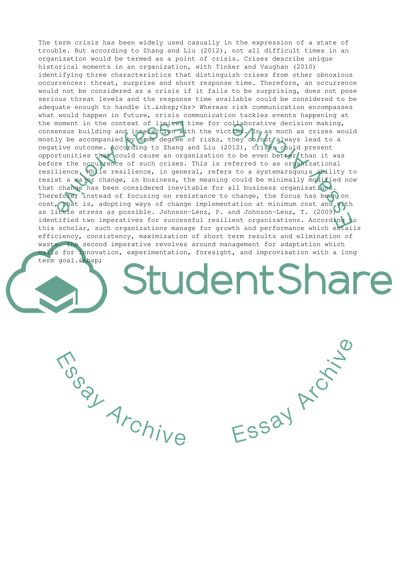Cite this document
(“Crisis Communication: Organizational Resilience Assignment”, n.d.)
Crisis Communication: Organizational Resilience Assignment. Retrieved from https://studentshare.org/business/1465535-crisis-communication-organizational-resilience
Crisis Communication: Organizational Resilience Assignment. Retrieved from https://studentshare.org/business/1465535-crisis-communication-organizational-resilience
(Crisis Communication: Organizational Resilience Assignment)
Crisis Communication: Organizational Resilience Assignment. https://studentshare.org/business/1465535-crisis-communication-organizational-resilience.
Crisis Communication: Organizational Resilience Assignment. https://studentshare.org/business/1465535-crisis-communication-organizational-resilience.
“Crisis Communication: Organizational Resilience Assignment”, n.d. https://studentshare.org/business/1465535-crisis-communication-organizational-resilience.


